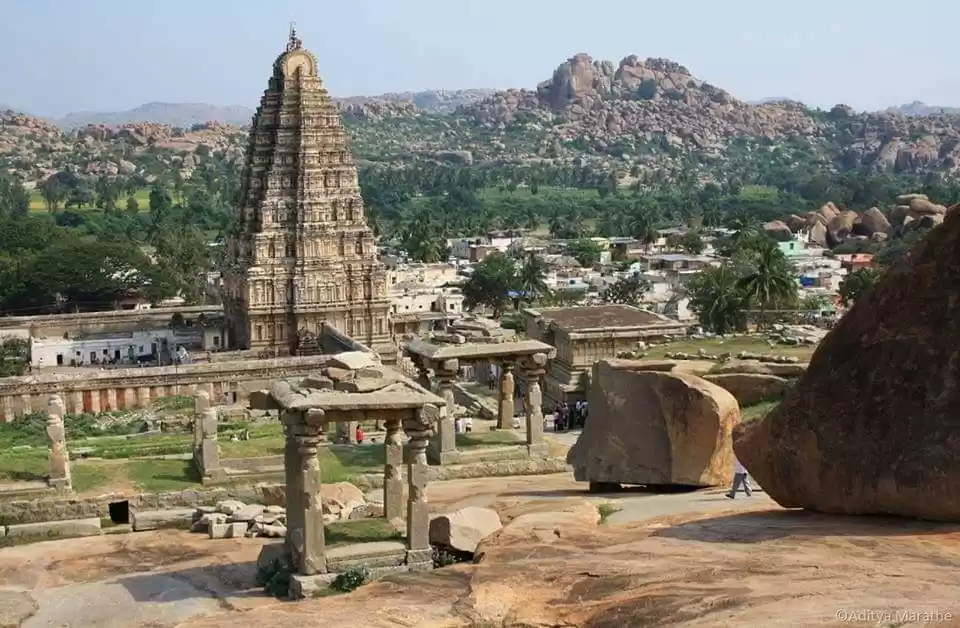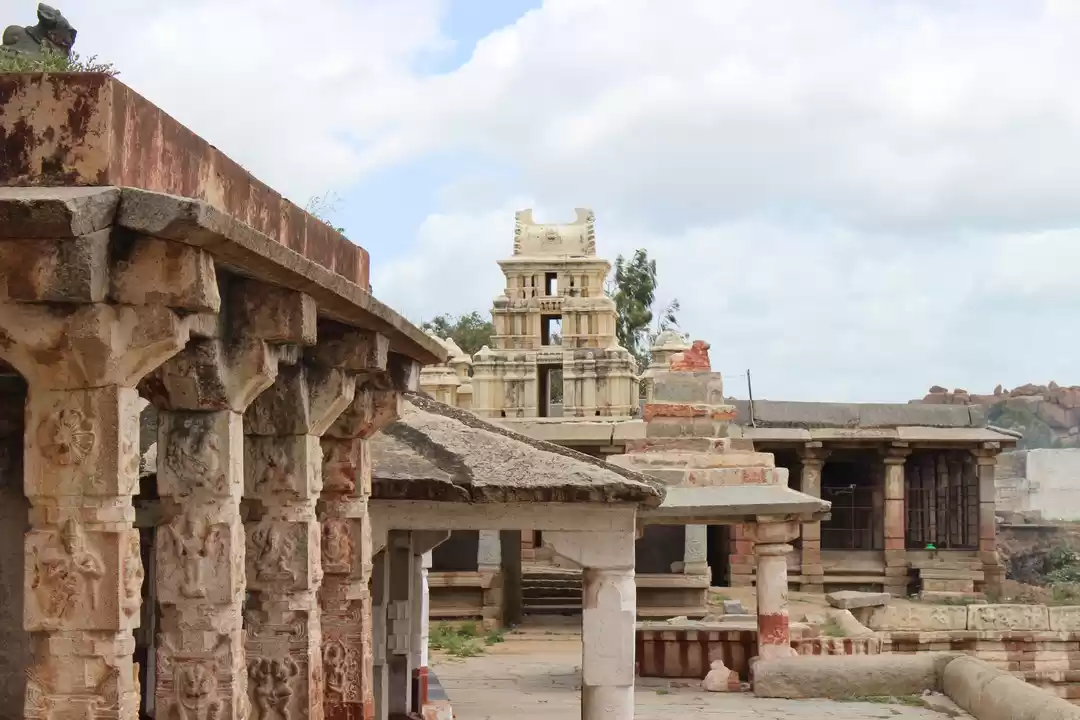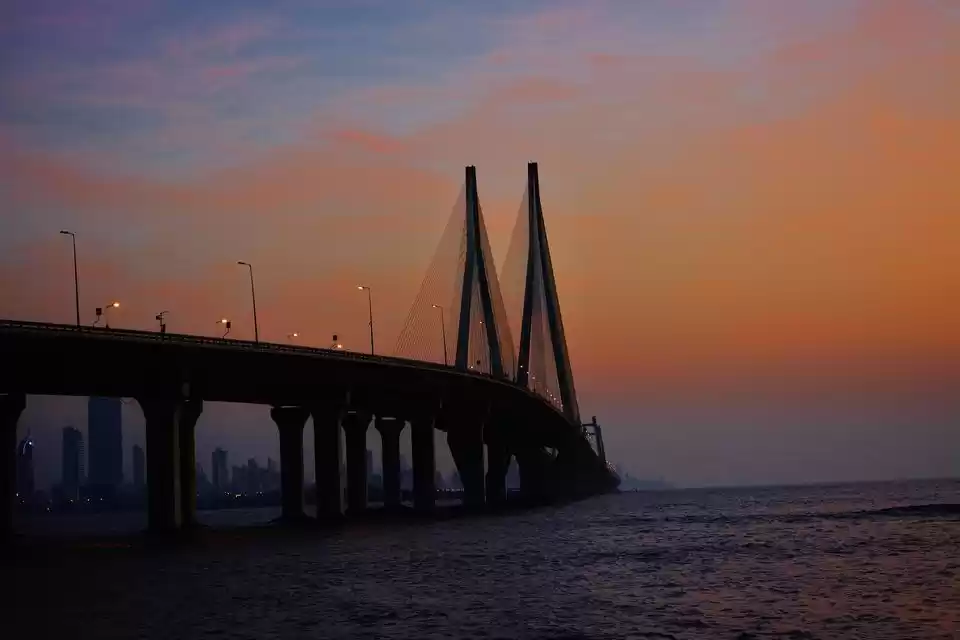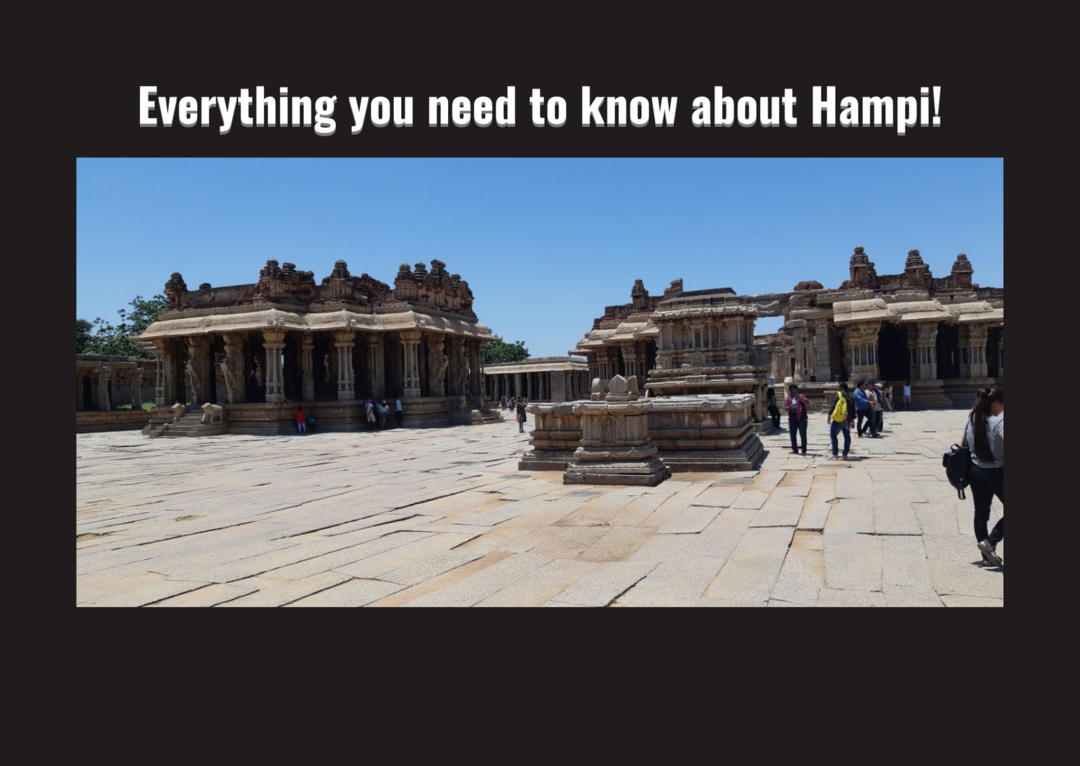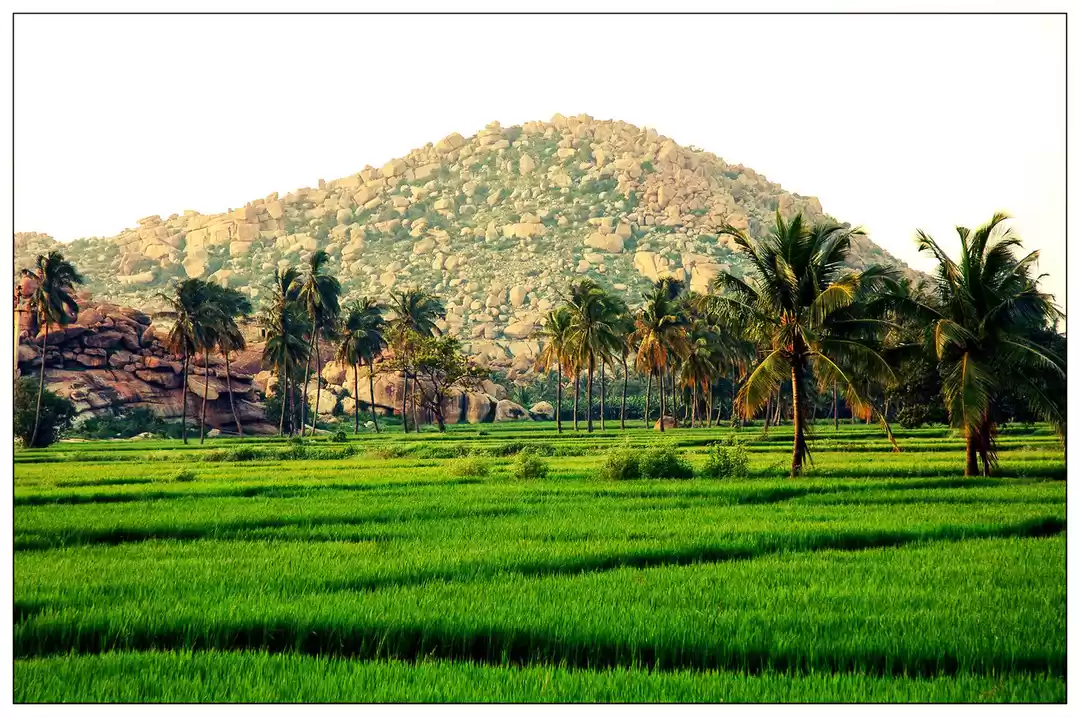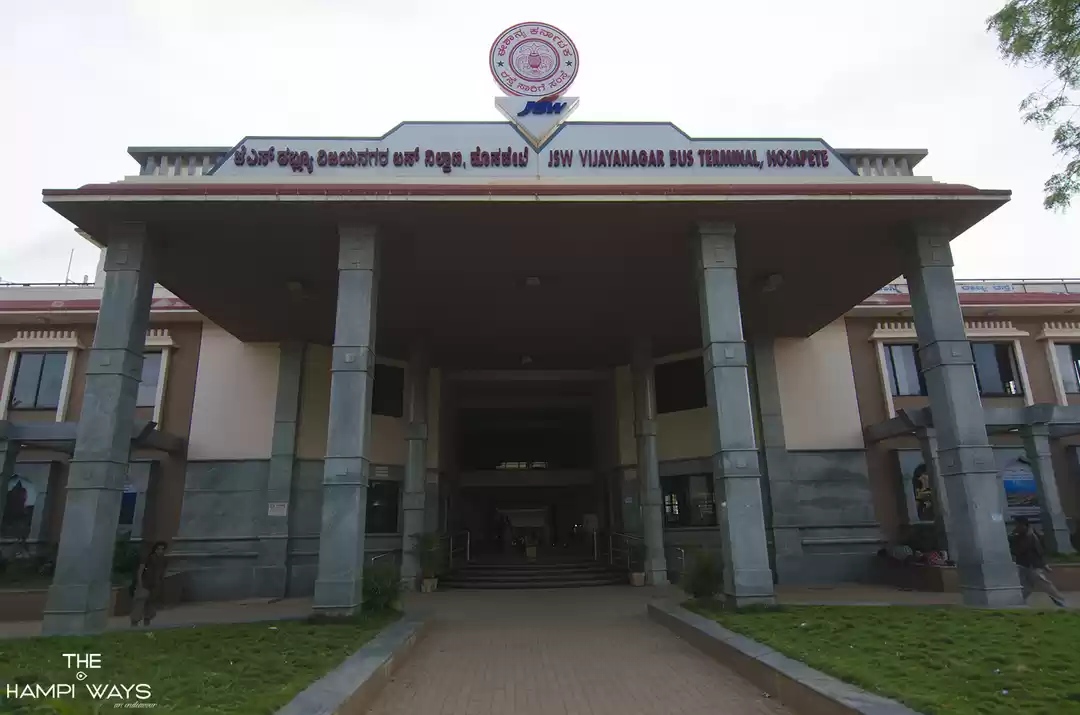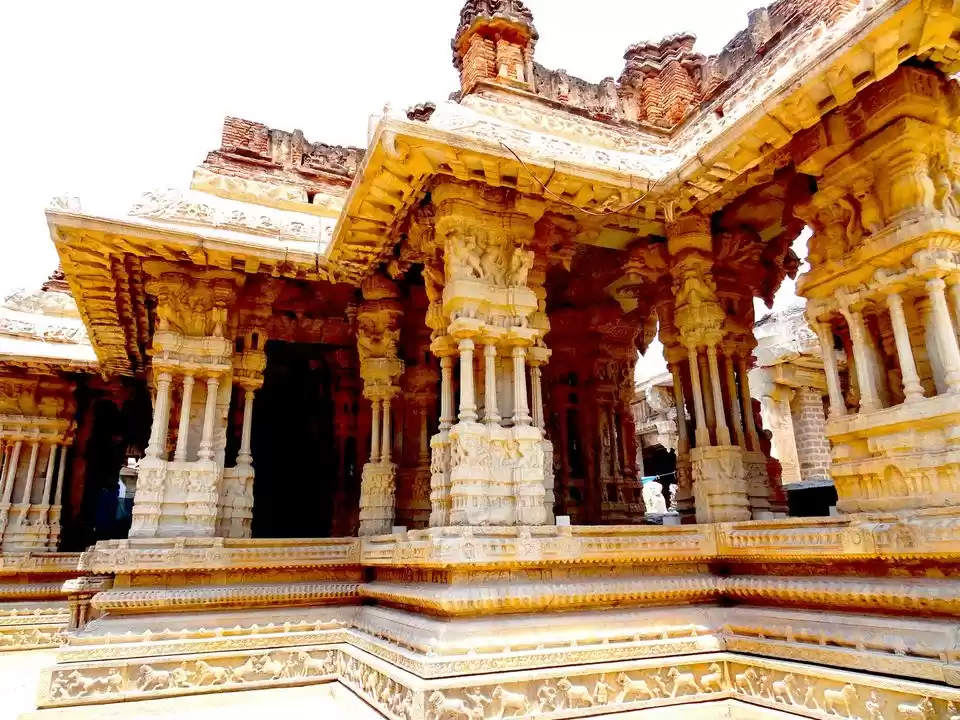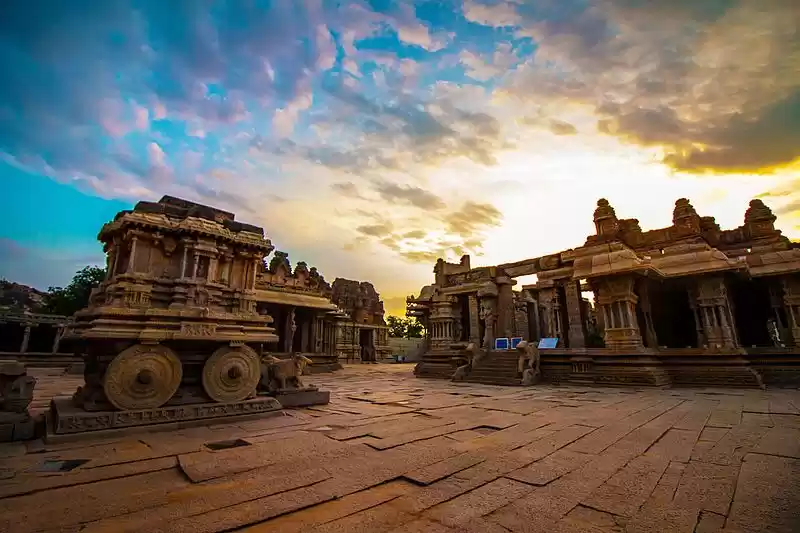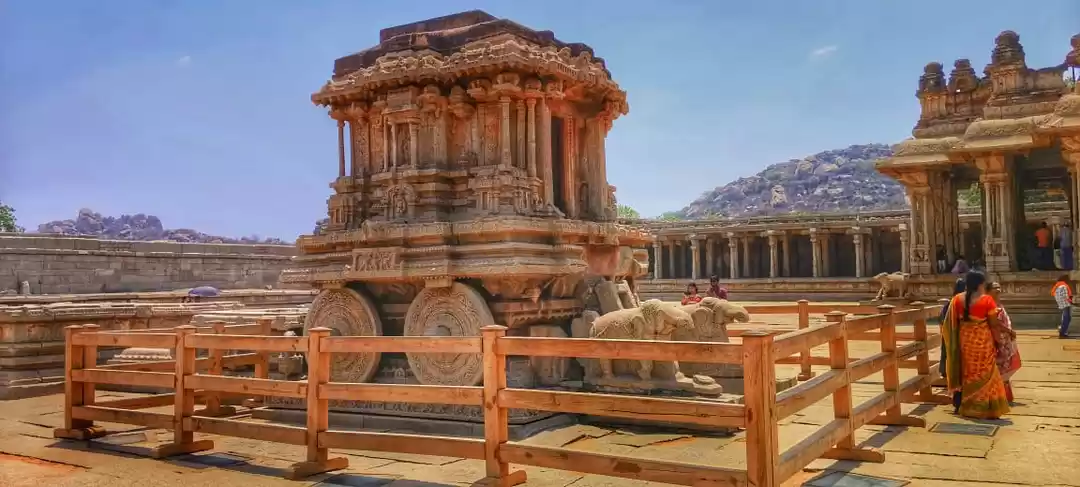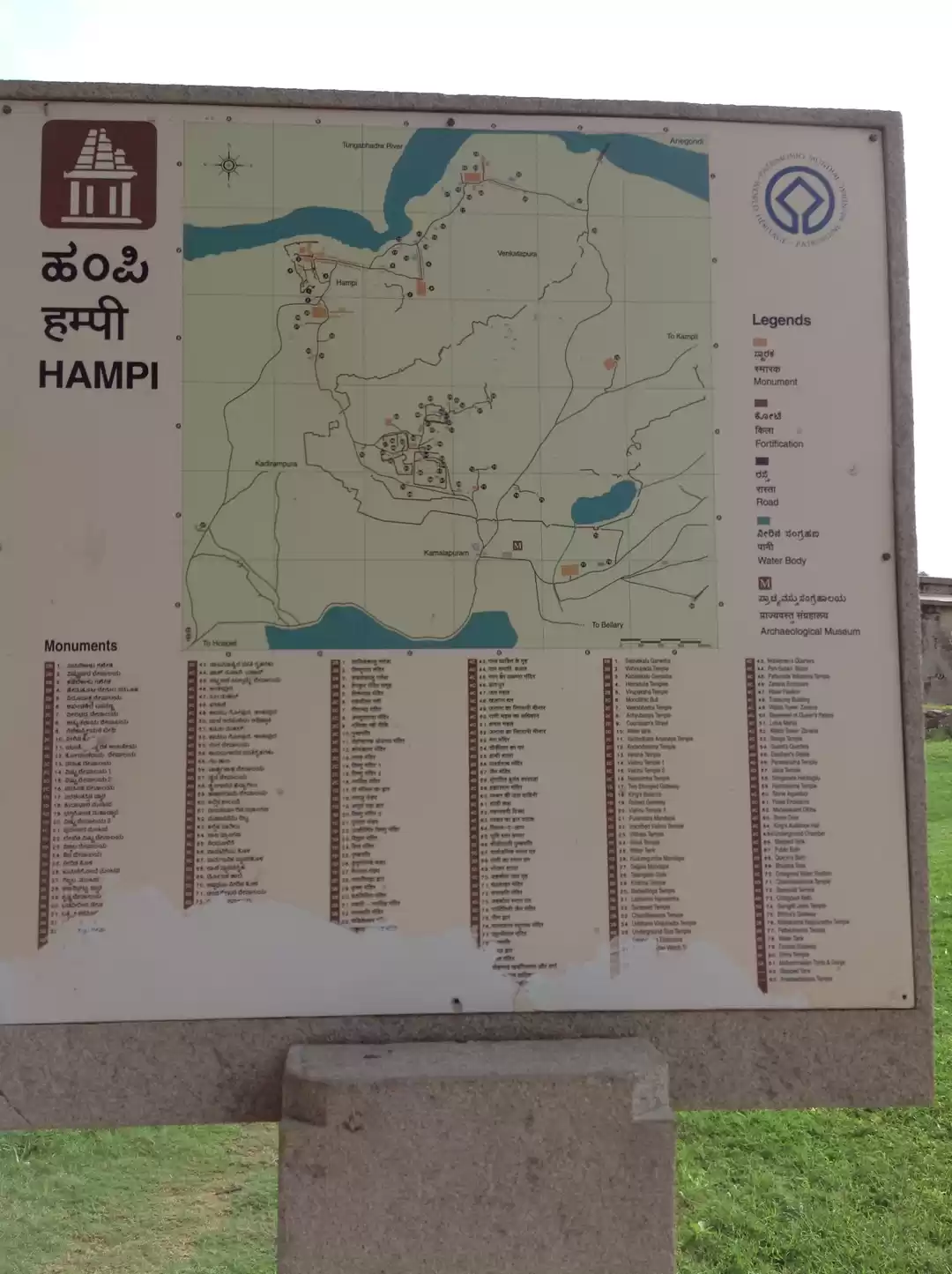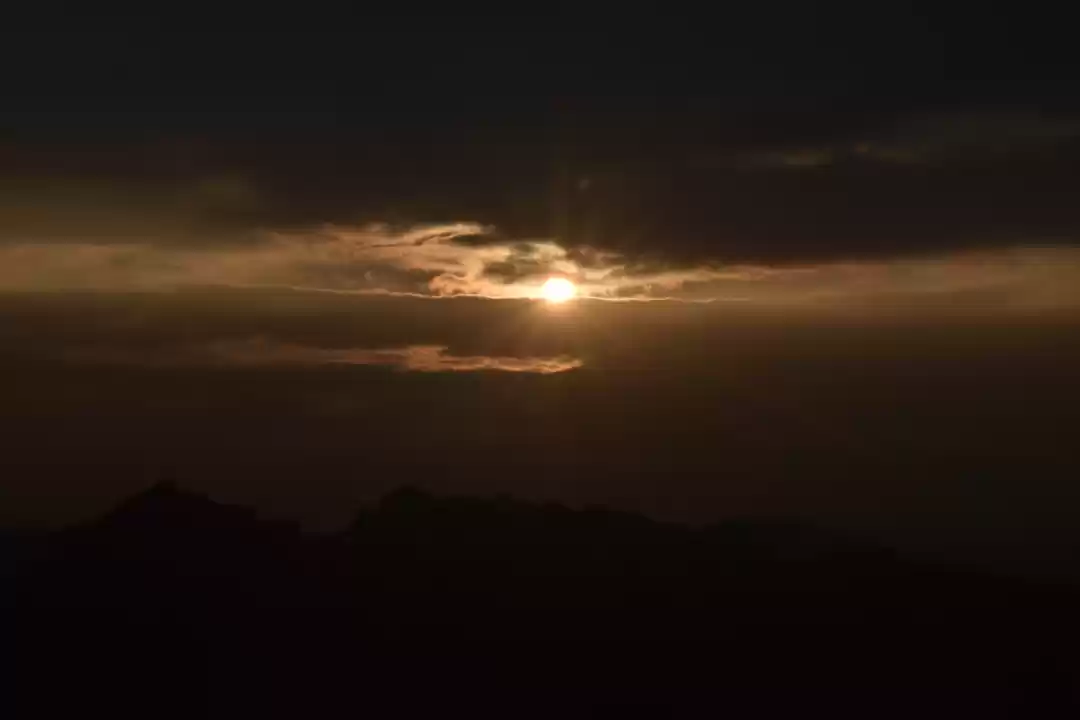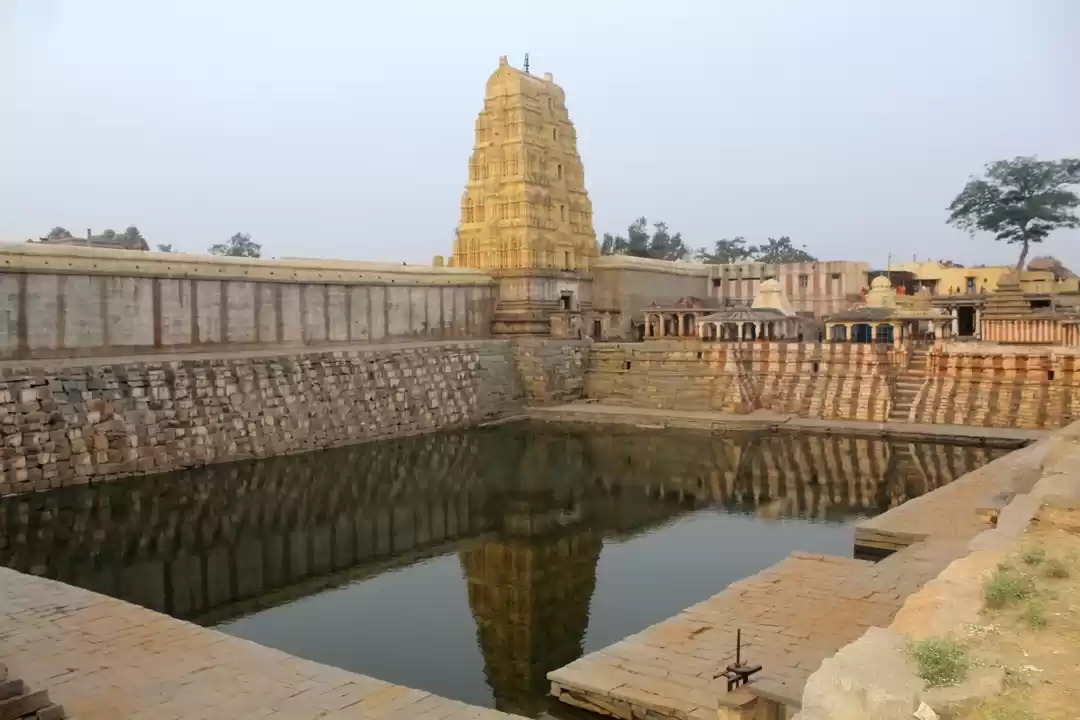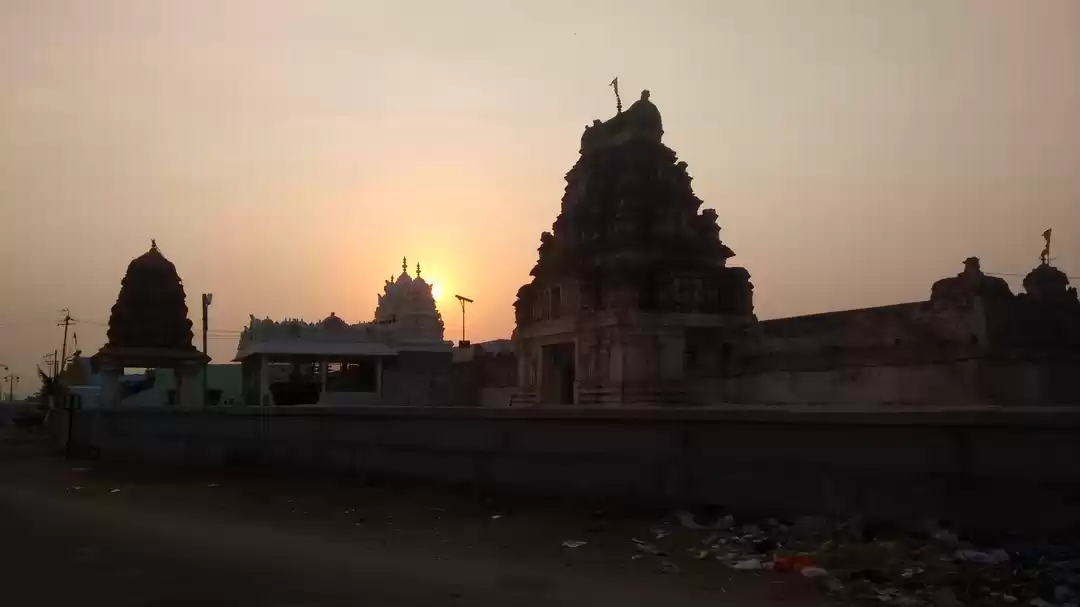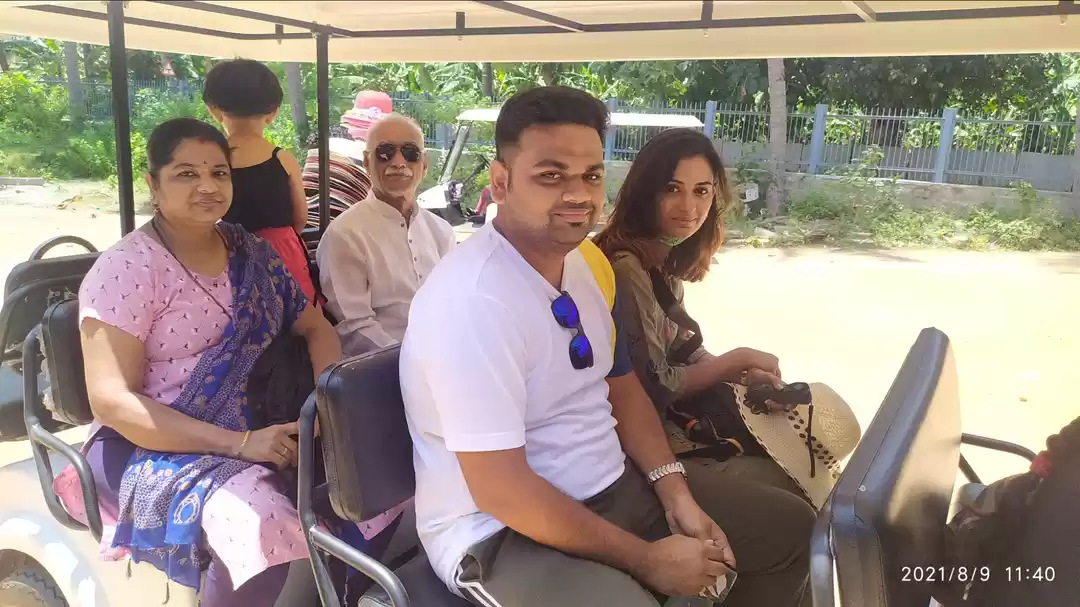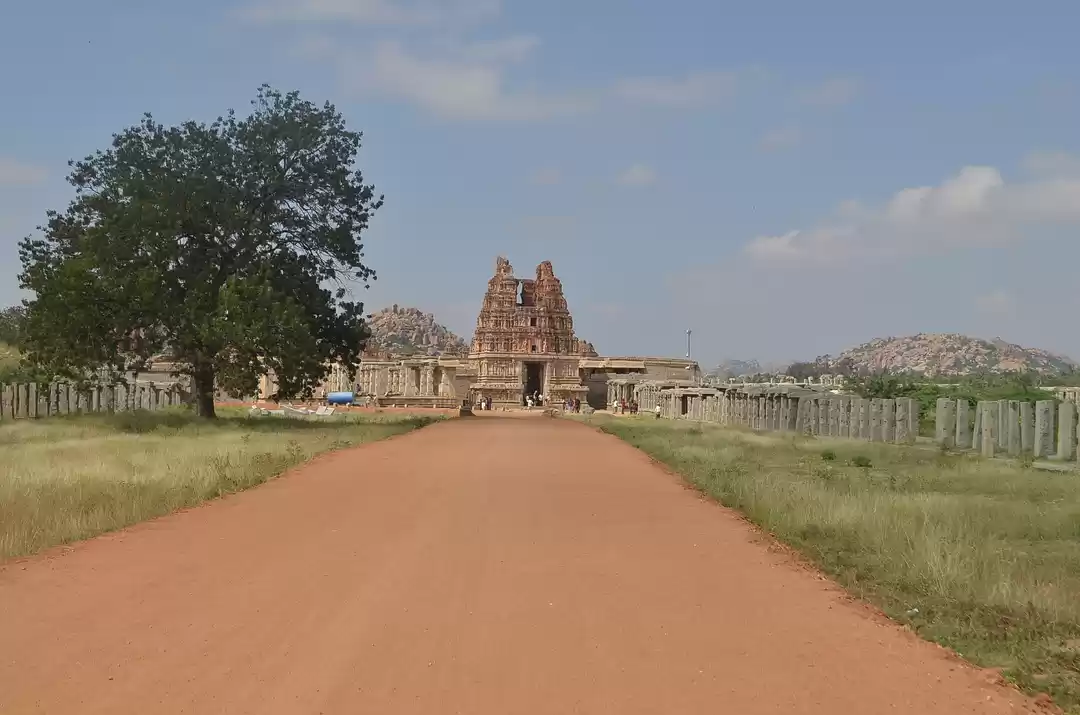
I spent two days in Hampi and tried to do what every tourist dreams of – see everything. I almost succeeded, except for a few misses like the Achyutharaya temple, Courtesans’ Street, and the Archaeology Museum.
My friend Uma and I took a train from Bangalore to Hospet. From the railway station we took an auto-rickshaw to our hotel in Hampi. En route we persuaded the driver to take us around the town for the next two days and show us all the temples and structures. That really worked. It was easy on our pockets too.
Hampi is all of a magnificent ruin, as it fell into decline after the defeat of the mighty Vijayanagar kingdom at the hands of the Deccan sultanates at the Battle of Talikota in 1565. Four centuries of gross neglect and defilement and what we have left is the beautiful damaged structures that the ravages of time have spared.

Our first stop was the Virupaksha temple. It was full of monkeys of all shapes and sizes. Sometimes they ganged up and attacked anyone who was carrying eatables. We only had cameras so they left us alone. A poor woman had a bad fall when a huge monkey pounced on her.
The temple has spectacular carvings. Don’t miss the pinhole camera effect produced by natural light on an inner wall.

We the climbed the Hemakunta Hill and went on to see the Kadalekalu Ganesh and the Sasivekalu Ganesh, both highly impressive in size and design. While driving around in the auto we saw the Sister Stones (Akka-Thangi), the Talarighata Gate and the Bhima Gate.

Our next stop was the Vijaya Vittala Temple where the iconic stone chariot stands. Legend has it that Krishnadevaraya happened to view the Sun Temple at Konarak and wanted to make a better chariot in stone. The architecture is spectacular and there were dozens of parrots in an ancient gnarled frangipani tree. The glory of the Vijayanagara kingdom is in evidence here. Words do not suffice to describe the grandeur of the sculptures, the musical pillars, the grand pavilions. The pictures give only a minor glimpse.



The Badavalinga temple and the Lakshminarasimha temple stand side by side. Both are mighty impressive. In the first, a huge larger-than-life shivalinga stands in a pool of water. The second has a massive deity with eyes popping out and a multi-hooded snake making a protective umbrella over its head. A teeny-weeny flowing water canal divides the two temples. The shivalinga is walled in and the door is locked but it appears that the pool has flowing water and doesn’t need cleaning.


The Mahanavami Dibba is where the king held his public ceremonies and audiences. It is in ruins but still impressive. The pushkarni is beautiful.


The underground Shiva temple was a picture of neglect. An elderly woman showed us around. My oh-so-imperfect Kannada helped. Thanks to the lady we were able to view some rare gems. The floor was immersed in water and we feared to venture far, but she guided us expertly from stepping stone to stepping stone. A beautiful nandi (sacred bull) sat in a lonely corner in the inner chamber, drawing a perfect portrait of gloom in the absence of his Lord. The temple in its heyday would have been a magnificent one, today no one even bothers to visit it. (We were the only tourists around.)




There is an open air Stone Trough on the roadside meant for watering horses. The King’s Balance is where he weighed himself in the Hindu tradition of offering thulabharam to the deity. But infinitely more interesting was the flogging post which consisted of two stone pillars with holes in them. Our guide told us they were used for tying up prisoners and flogging them in public.

The Zenana Enclosure with the Lotus Mahal and Elephant Stables was particularly interesting. A history teacher had seated his middle school class under a gnarled tree in the park outside Lotus Mahal and was telling them the story. I thought that was quaint.


Hampi Bazar, the monolithic bull pavilion and the Riverside ruins came next on our itinerary. The Yantrodhara Anjaneya temple was interesting. Sugreeva’s cave was another curiosity. There is a temple dedicated to the Varaha avatar of Vishnu but very little of it remains.
The Hazararama Temple was spectacular though its condition was pathetic. The carvings are exquisite.


We offered prayers at the Uddana Veerabhadra temple and had an outside look at the Chandikeswara Temple which was closed. We looked for the famed sati stone but couldn’t find it. Once upon a time a woman had burned herself at the funeral pyre of her dead husband and her sacrifice had been immortalized by a sati stone in the temple. We couldn’t find out her name.
We also got to visit a Yellamma temple where the puja was performed by a woman. (Goddess Yellamma is associated with the ancient devadasi cult. Girls are no longer dedicated to the deity we are told, but I wouldn’t bet on it.) There were no other worshippers besides us. An elderly woman sat outside the temple entrance. One woman inside, one woman outside and two women tourists. Sad story, I thought.

A short coracle ride across the Tungabhadra took us to Anegundi village. (We missed the Chakrathirtha and the hundred shivalingams though.) We visited the Navabrindavan temple which was totally deserted. This was where Jain monks attained samadhi, starving themselves to death by their own volition, when they decided it was time to give up their lives. We also visited a few temples. The Durga temple was unusual with a huge tree decorated from top to bottom with colourful pieces of cloth tied by devotees to mark their fervent appeals to the fierce deity.

If only I could write in detail about the open air museum that Hampi presents, I’m sure it would make a good Ph.D. thesis. No joke! I mean it!



